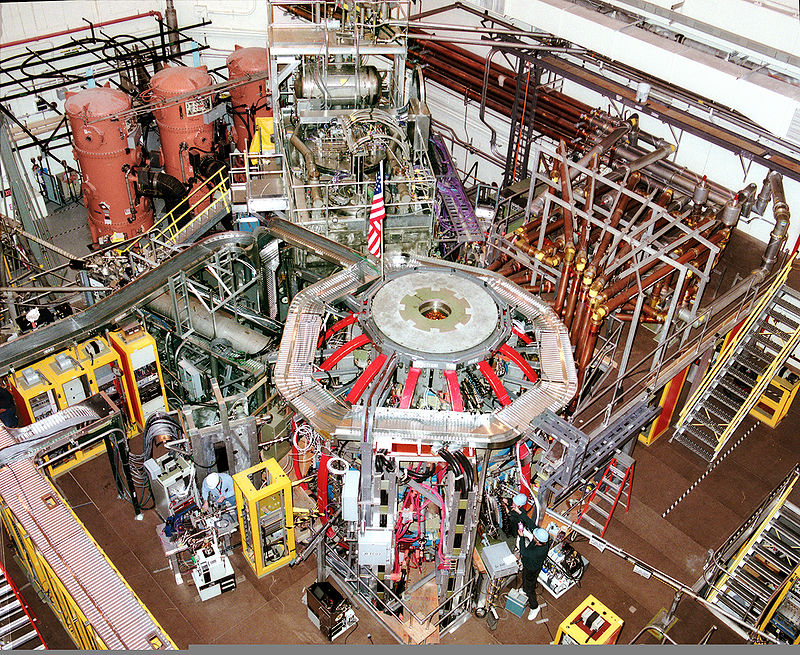One of the big problems with developing commercial nuclear fusions reactors is the control of the plasma. Turbulence develops in the plasma and causes the plasma to move outside of the intended zone of confinement. It can touch the side of the chamber and destroy the symmetrical confinement needed to create fusion. Both magnetic fields and particle beams can be used to control the shape and the circulation of plasma Recent developments may help solve the plasma control problem for certain designs of experimental fusion reactors.
The National Spherical Torus Experiment Upgrade (NSTX-U) is "an innovative magnetic fusion device that was constructed by the Princeton Plasma Physics Laboratory (PPPL) in collaboration with the Oak Ridge National Laboratory, Columbia University, and the University of Washington in Seattle, WA. The NSTX-U is being used to study the physics principles of spherically shaped plasmas -- hot ionized gasses in which nuclear fusion will occur under the appropriate conditions of temperature, density, and confinement in a magnetic field."
The NSTX-U has a neutral particle beam system which affects plasma rotation by colliding with the plasma and transferring momentum to it. There are two emitters that each have three neutral beam sources. One emitter is aimed at the core of the plasma while the other emitter is aimed at the edges of the plasma cloud. A set of magnets gives the operators further control of the plasma rotation. Controlling the rotation of the plasma helps to prevent instabilities from forming that degrade the magnetic fields inside the tokamak and allow the plasma to touch the side of the confinement vessel and dissipate. The effects of the neutral beams and the magnets are balanced to prevent abrupt changes of plasma velocity. The goal is to balance the amount of heat stored in the plasma with the rotation of the plasma.
Imène Goumiri, the scientist who led the work, conducted research at the U.S. Department of Energy's (DOE) Princeton Plasma Physics Laboratory (PPPL) and now is a physicist at the University of Wisconsin-Madison. She said "When designing fusion machines, it's becoming more and more important to use control systems and modeling techniques taken from the world of aeronautics engineering. What's new is that these tools have now been applied to plasma physics problems; that's what makes this research unique."
Goumiri developed a feedback control system for the NSTX-U. Sensors will gather information about the behavior of the plasma which will then be analyzed by special computer algorithms. The algorithm will then control both the neutral particle beams and the magnets in real-time. The control of beams and magnets in the new system was simulated by a computer program developed at PPPL. The tests showed that algorithm could successfully control the stored energy and plasma rotation in a way that increased the stability of the plasma. The next step is for the researchers to actually use the new feedback system to control the NSTX-U. This research project marks the first time that particle beams and magnets have been used together to control the rotation profile of the plasma in a tokamak.
Photo National Spherical Torus Experiment Upgrade By Princeton Plasma Physics Laboratory
